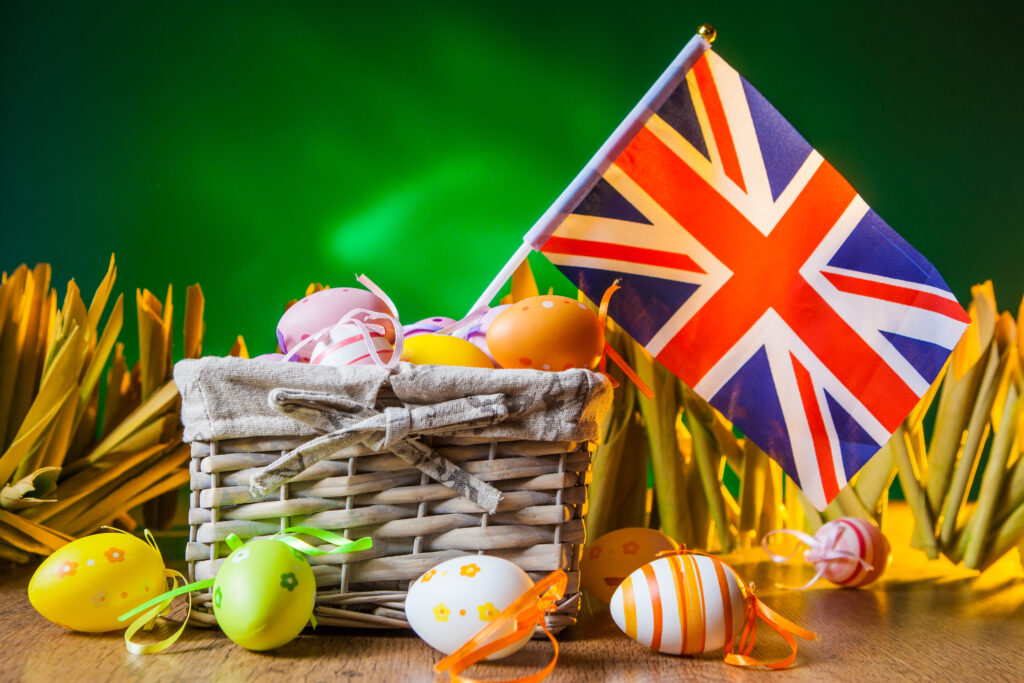
As Easter approaches, its that time for most of us to finish the leaner times of lent. The idea is a little similar to fasting, in that Christians can give up sugary, fatty and alcoholic foods for 40 days (although unlike Ramadan, the time of day doesn’t affect our eating at all). When the 40 days are over, then we enjoy working out way through mountains of chocolate or endure countless photos of cute little bunnies (a symbol of new life at Easter), rather than the omnipresent YouTube cat videos.
We all enjoy the fun aspect of Easter, but it is easy to forget it is the second biggest religious holiday in the Christian calendar. As a language services company with a global community of certified linguists, it’s fun to look at the traditions, weird and wonderful as they are, around the world.

In the UK it is tradition for families to gather for a meal on Easter Sunday after visiting church. Chocolate Easter eggs are distributed and eaten generously, along with the odd hot cross bun and egg hunt. As for the hot cross bun, this is a traditional Easter treat that has been enjoyed in England since medieval times. It is a spiced, sweet bun made with currants or raisins, and is marked with a cross on the top made from pastry or icing (I’m a sweet tooth, so I prefer the icing variant).
The cross is said to represent the crucifixion of Jesus, and the spices symbolize the spices used to embalm his body after his death. In some cultures, it is also believed that hot cross buns have magical properties, such as warding off evil spirits and protecting homes from fires.
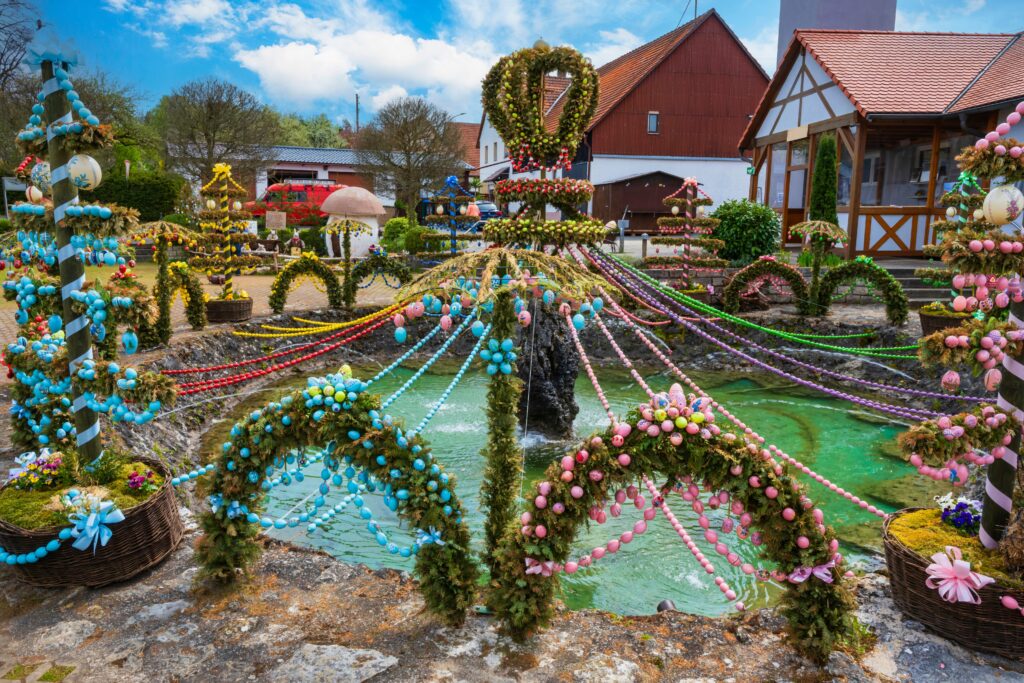
In Germany, Easter is celebrated with a unique tradition called “Osterbrunnen,” which means “Easter well.” This involves decorating public wells and fountains with colorful Easter eggs, flowers, and other ornaments. The custom is particularly popular in the Franconia region of Germany, where entire villages compete to create the most elaborate and beautiful Osterbrunnen display. It’s a wonderful sight to see!
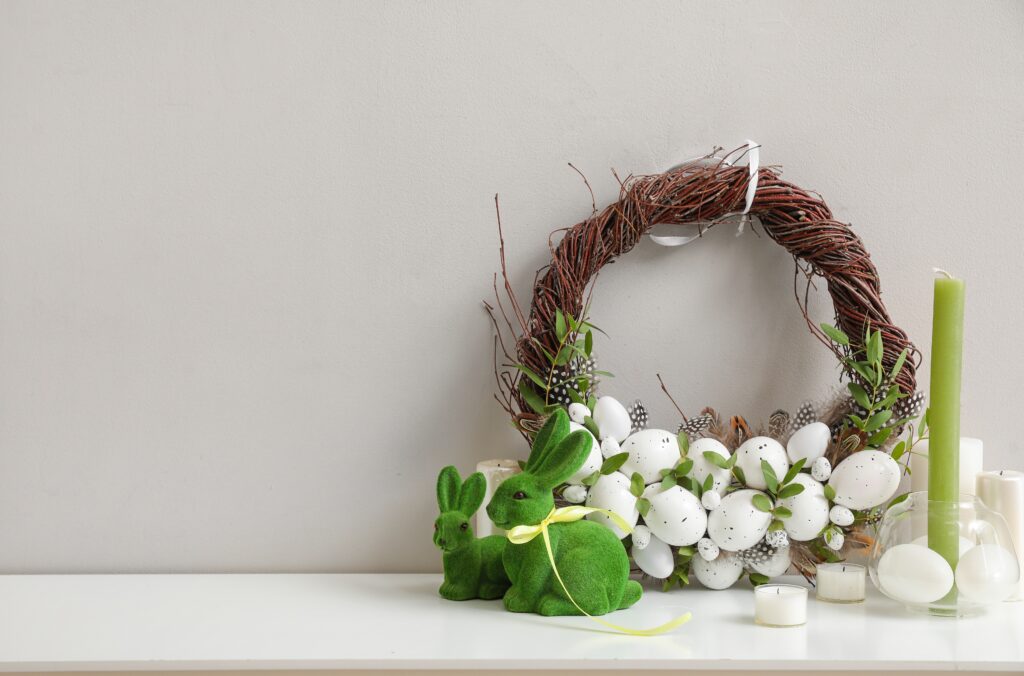
In Austria, Easter is marked by the “Osterjause,” which is a special Easter snack that typically includes ham, cheese, bread, and Easter eggs. Families gather around the table to enjoy this festive meal together. In some regions, people also create “Osterkränze,” or Easter wreaths, made from twigs and decorated with ribbons, eggs, and other adornments.
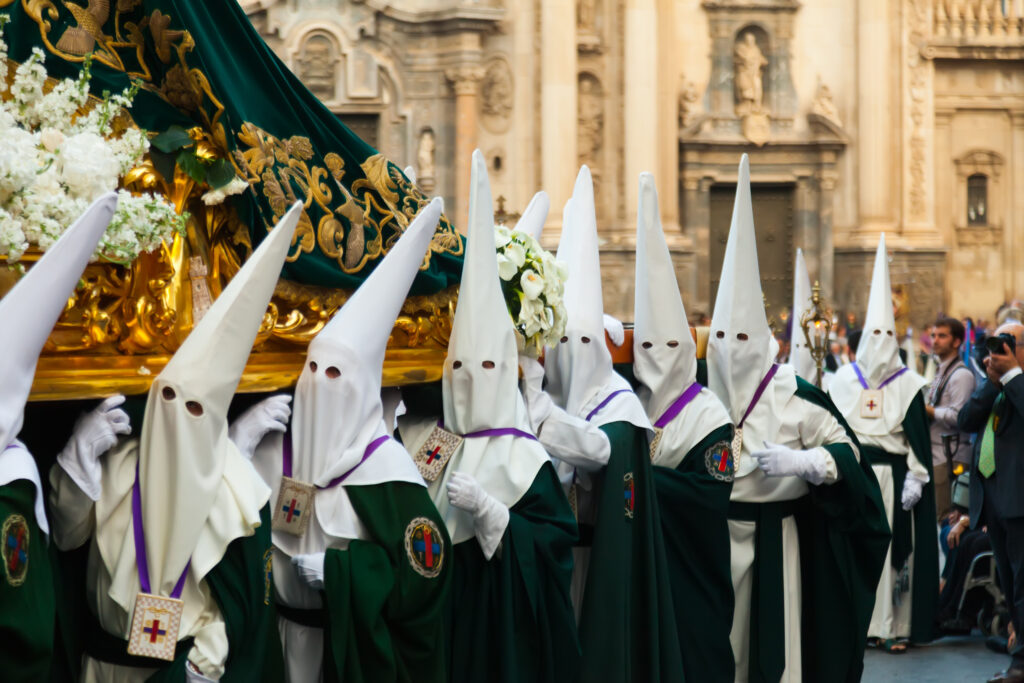
In Spain, Easter is celebrated with elaborate processions and parades, particularly in the southern region of Andalusia. The most famous of these is the “Semana Santa” or Holy Week, which features stunning floats carrying religious figures and scenes, as well as penitents dressed in hooded robes. It’s a somber yet beautiful way to observe the Easter season.
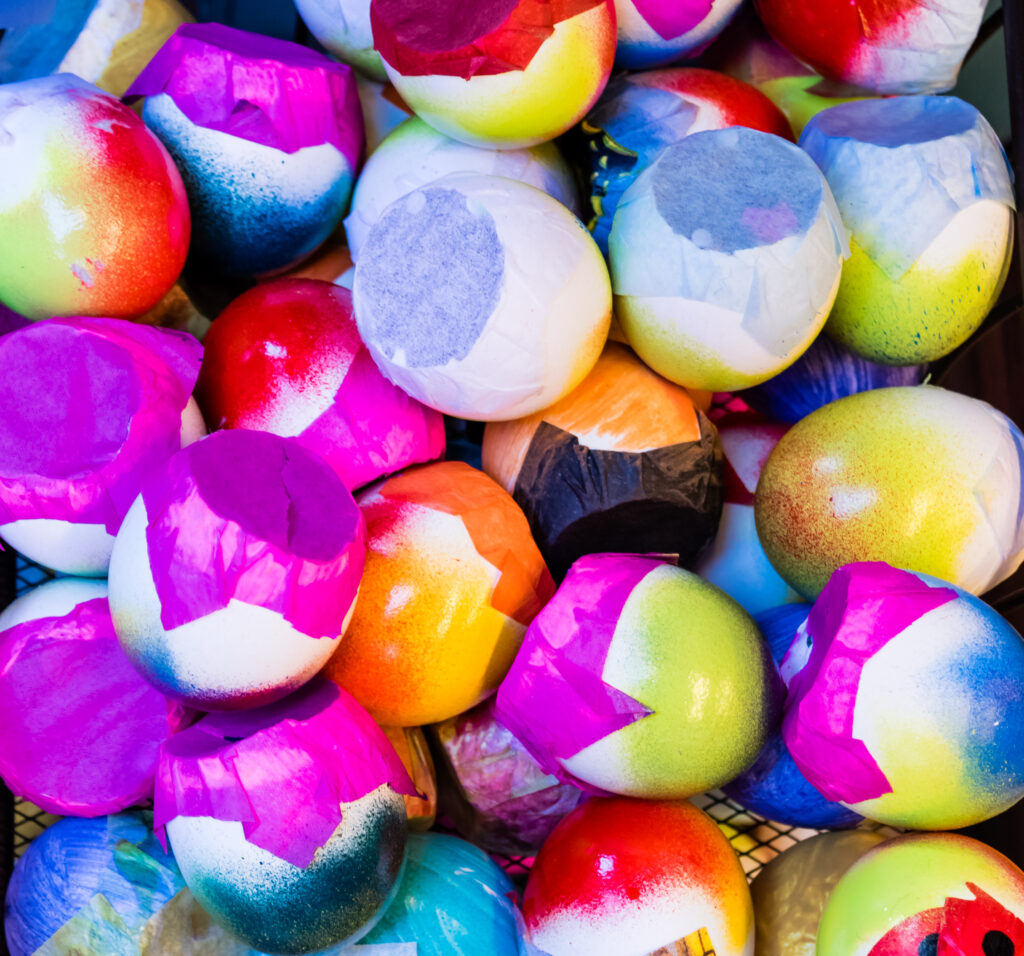
In Mexico, Easter is a major holiday that is celebrated with a variety of traditions. One of the most popular is the “Cascarones,” which are hollowed-out eggshells filled with confetti or small toys. People crack them over each other’s heads for good luck and fun. Another tradition is the “Semana Santa” processions, which feature reenactments of the Passion of Christ and culminate in a joyful celebration on Easter Sunday.
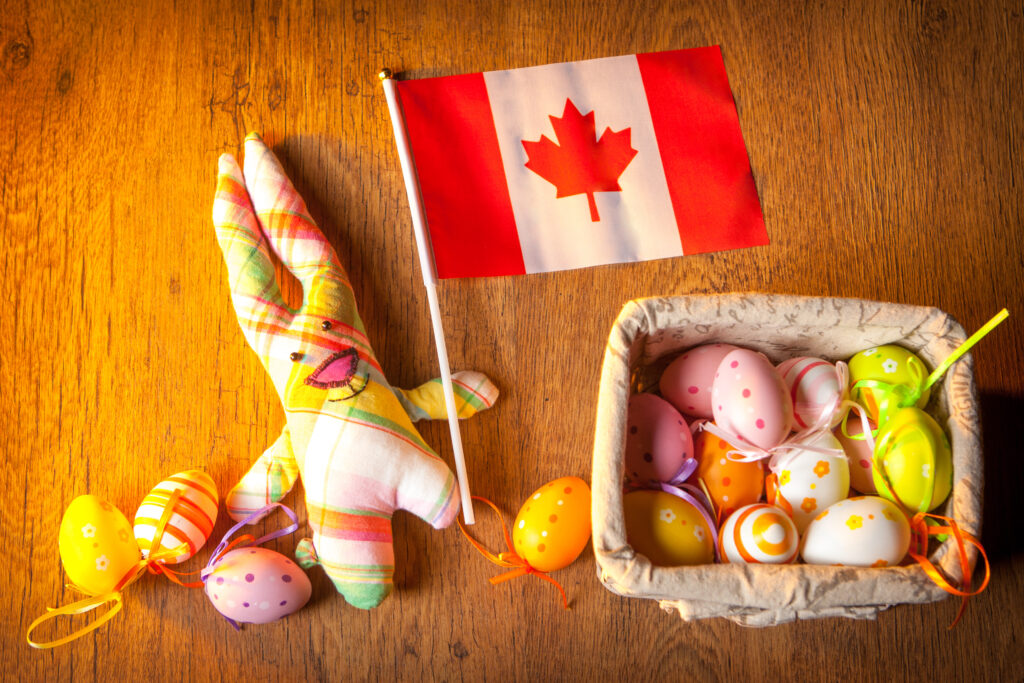
In Canada, Easter is celebrated with a variety of customs that reflect the country’s multicultural heritage. For example, French Canadians celebrate “Pâques” with a special Easter meal that includes tourtière (a savory meat pie), ham, and maple syrup desserts. Meanwhile, many Indigenous Canadians mark the holiday with traditional activities like drumming, dancing, and feasting.
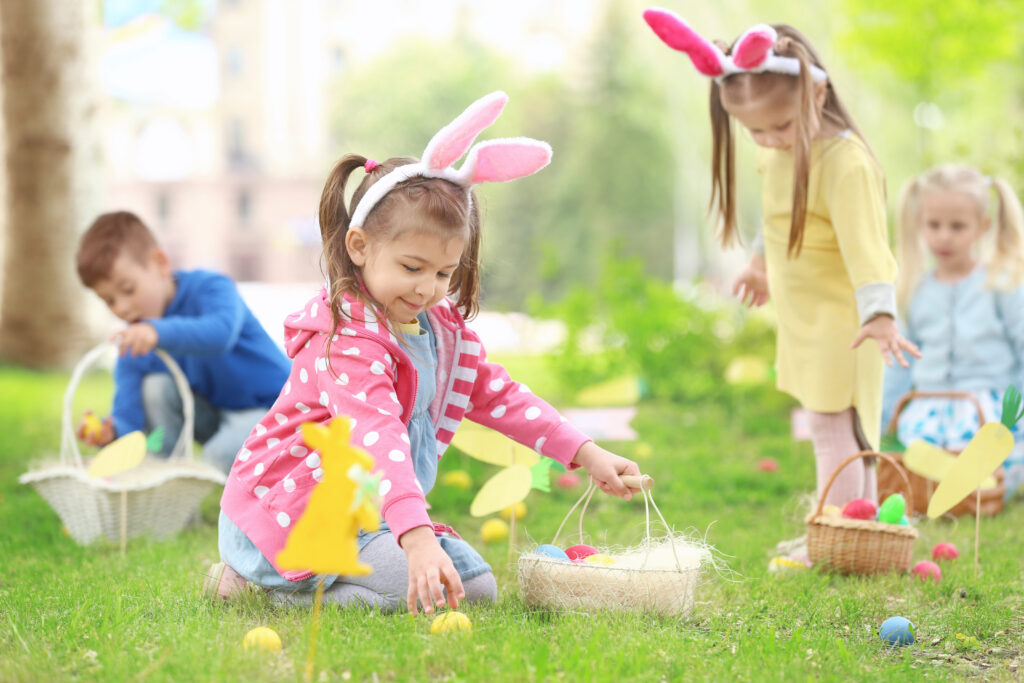
In America, Easter is a popular holiday that is celebrated in many different ways. One tradition is the Easter egg hunt, where children search for hidden eggs filled with candy and treats. Another is the Easter parade, where people dress up in colorful outfits and hats to show off their spring finery. And of course, many families gather for a special Easter dinner featuring ham, lamb, or other festive dishes.
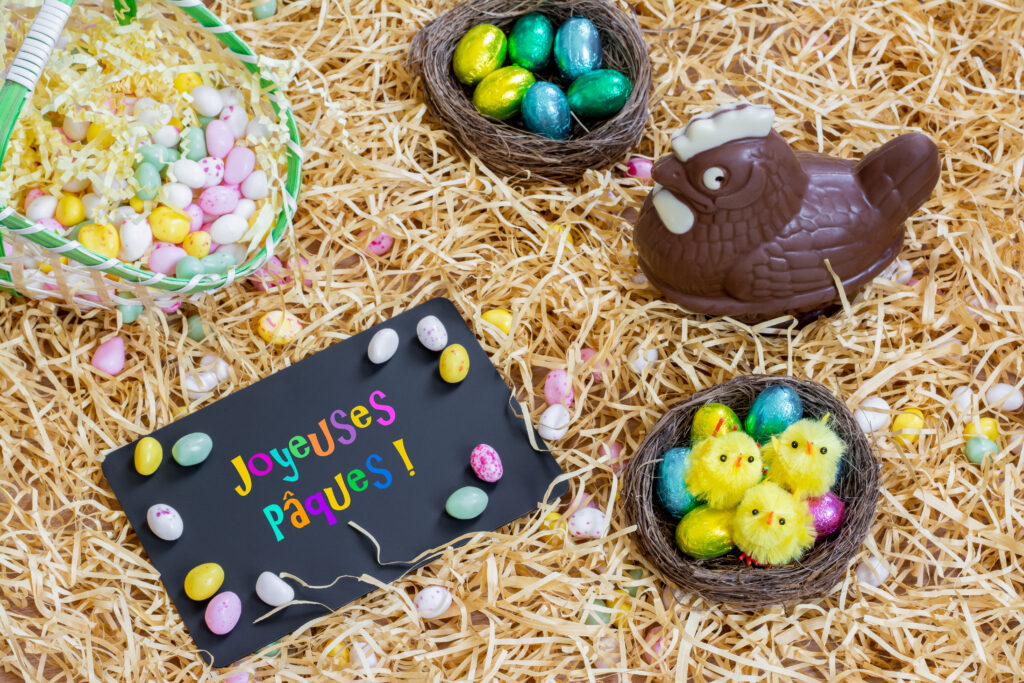
The French celebrate Easter Monday by serving up a giant omelette. The gargantuan gastronomic treat is cooked using 110 pounds of bacon, giant onions, 5,000 eggs and plenty of garlic to create a monster of an omelette eaten by the village of Haux, Gironde. This tradition is relatively recent as it was only started around 30 years ago, but is thought to trace back to a tale where Napoleon demanded a giant egg dish for his troops.
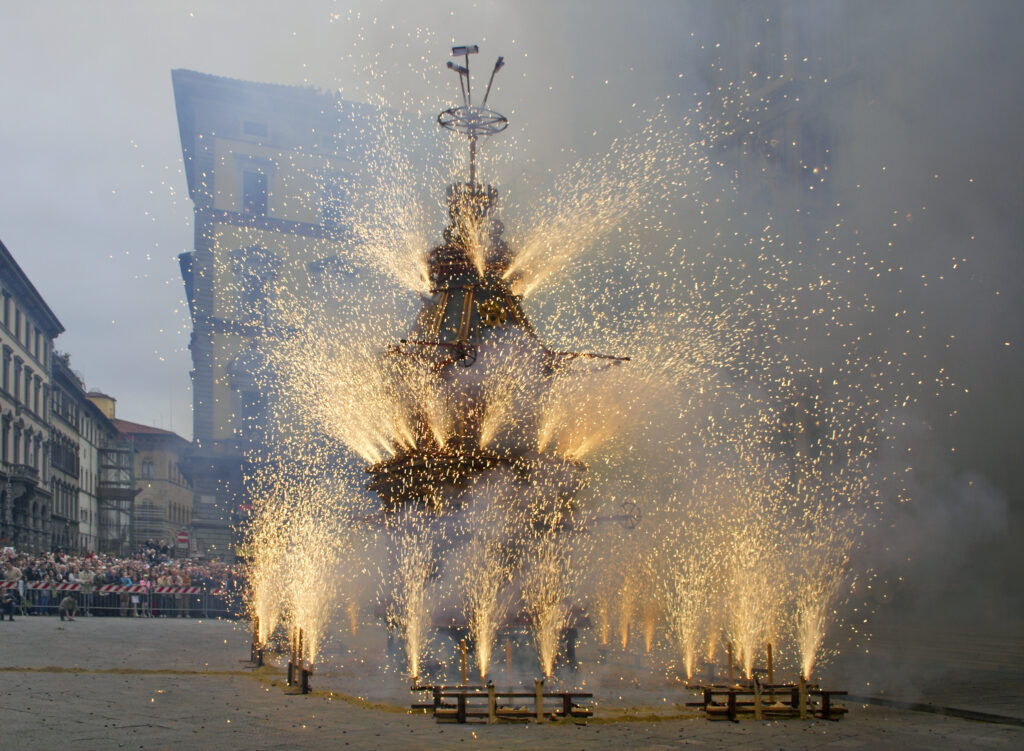
In Sulmona based in the Abruzzo region of Southern Italy, the procession of La Madonna Che Scappa (The Dashing Madonna) is held on Easter Sunday. People carry statues of Saint John, Saint Peter and Risen Christ to the Church of San Filippo Neri where they announce the news of the Resurrection to the mourning of Loreto. It is then from the persuasion of the saints that the Madonna slowly moves out and sprints to meet her son, along with the sound of firecrackers dashing along with her sprint. As this is Italy no celebration would be complete without plenty of wine and pasta to follow the procession.
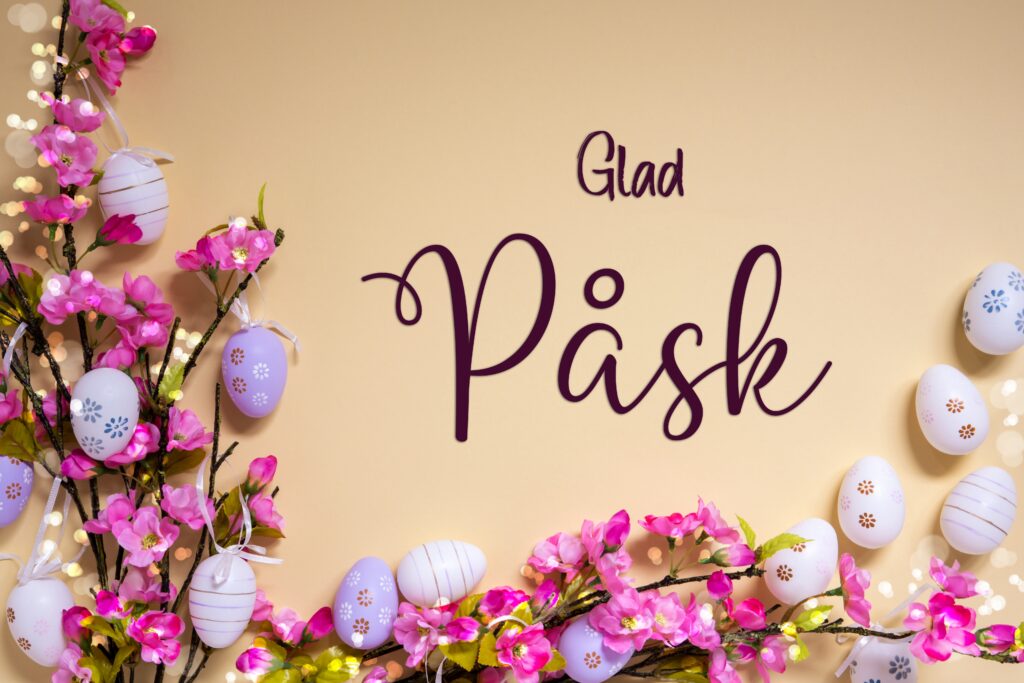
Halloween and Easter in the same sentence? Yep we couldn’t believe it either, but tradition has it in Sweden that on Maundy Thursday, Swedish children cover their faces in paint. They take broomsticks, dress as witches and go knocking on people’s door asking for sweets. According to legend in Sweden, witches visited the forest of Blakulla before Easter, to party with the devil.
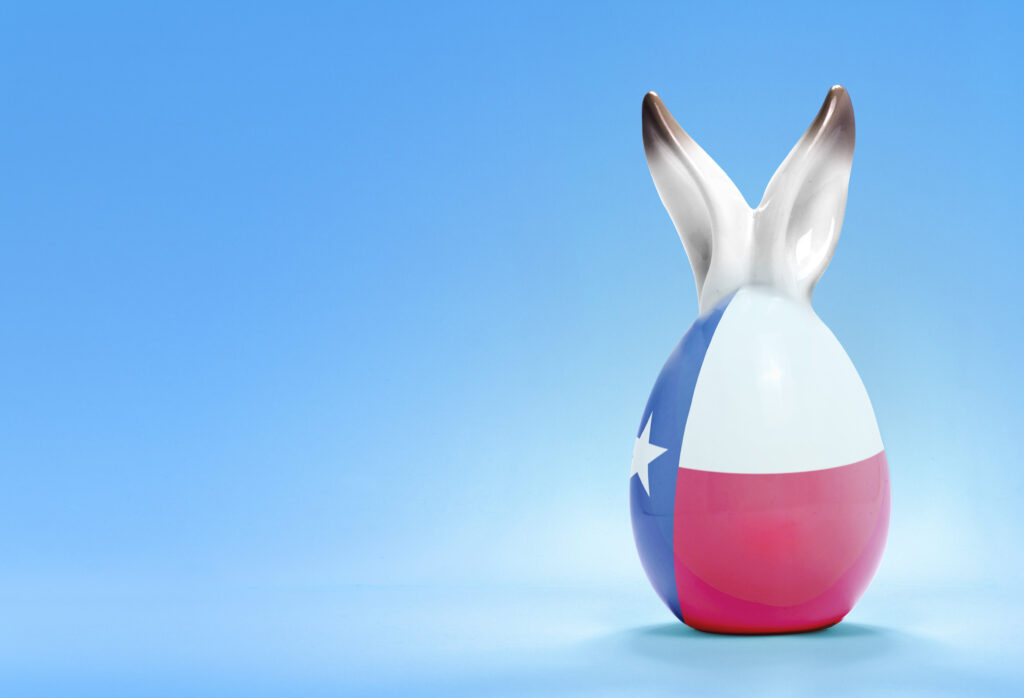
My idea of a traditional easter weekend in the states is an Easter egg hunt in the park… However, there is also a ceremony which began in 1847 to celebrate the peace treaty which was signed by German settlers and Native Americans. Residents of Fredericksburg dress up as Easter bunnies, Comanches and pioneers parading through the tiny town before setting the hills on fire. As the fire is ablaze the towns’ lights are lowered as part of the Easter Fires Pageant.
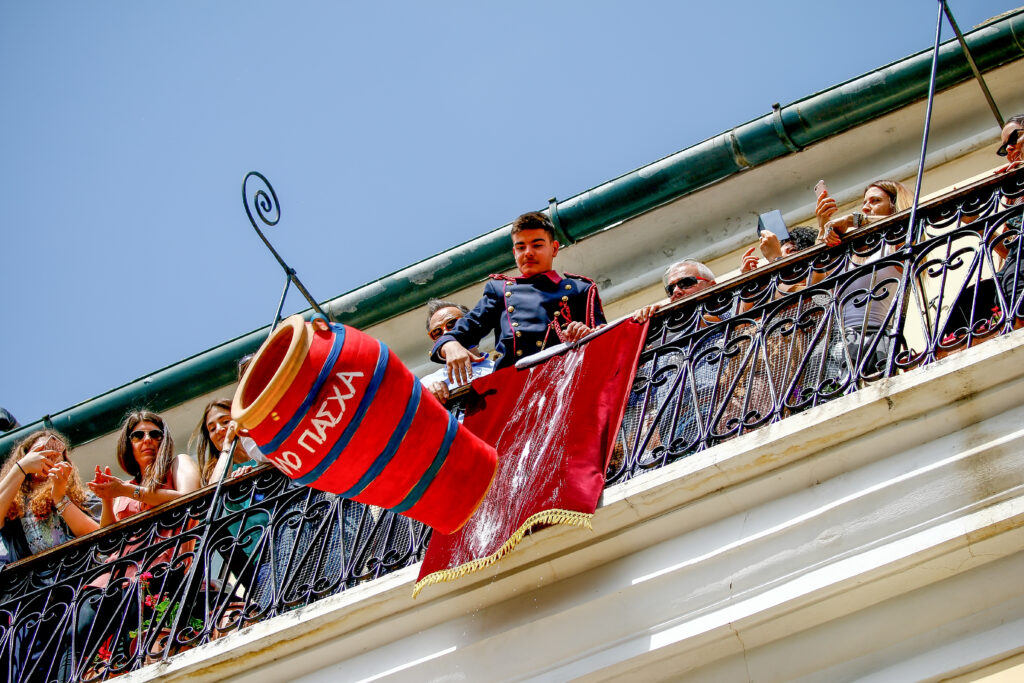
The penultimate in our Localizing Easter traditions takes us to Greece. To end the mass on Easter Sunday, church bells ring and residents of Corfu hurl clay pots off their balconies to celebrate that death has been beaten by the Resurrection. This reminded me of the Greek smashing plates in restaurants!
This tradition is apparently inspired by the Venetians who used to throw their old and unwanted possessions out of their windows on New Year’s Day. The tradition was adopted by the residents of the island and was applied to the most important day in their calendar. I guess it’s probably not the best day to go for walks without a helmet 😉
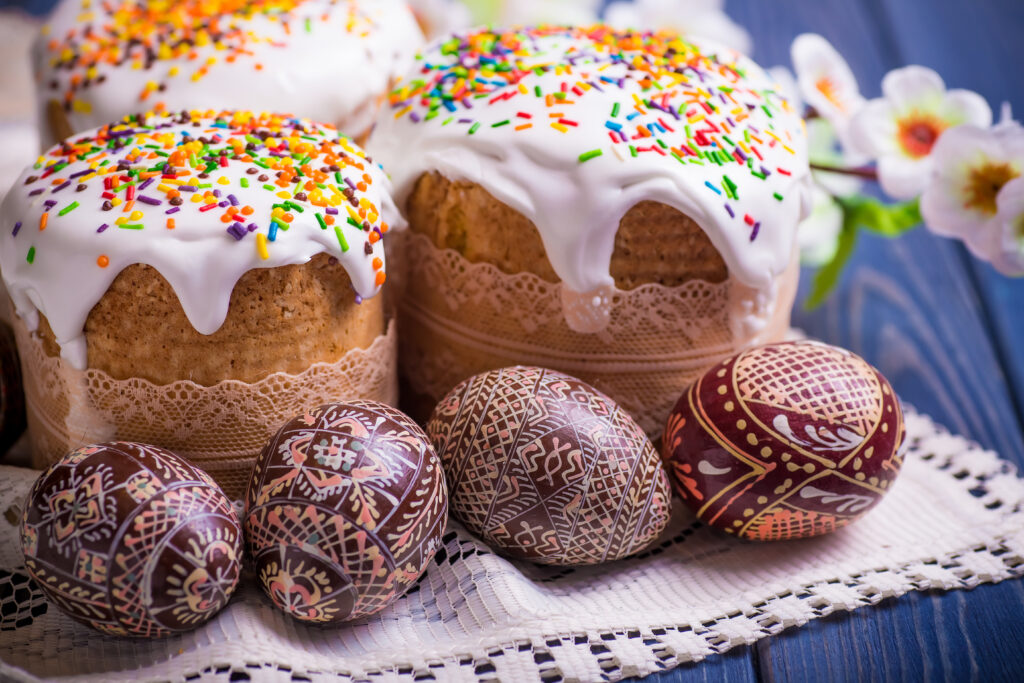
Ukrainians love to decorate real eggs, known as ‘pysanky’. These are beautifully decorated with intricate designs and symbols. The eggs are typically dyed using natural materials, such as onion skins or beet juice, and then decorated with a special tool called a ‘pysachok’, which is used to draw intricate designs with wax. Each design has its own symbolic meaning, and the eggs are often given as gifts to friends and family members. In the Netherlands and Germany many people share this tradition, where you can decorate boiled eggs at home and use them as festive decorations.
One I’d never heard of, is that on Easter Sunday, it’s customary for Ukrainians to bring baskets filled with traditional foods to church to be blessed by the priest. The baskets usually contain items like bread, salt, meat, cheese, eggs, and horseradish, each with its own symbolic meaning.
On the night before Easter, many Ukrainians attend a special church service called the “Vigil of Resurrection.” The service is held in complete darkness until the stroke of midnight, at which point candles are lit and the church is filled with light. This represents the resurrection of Jesus Christ.
Incidentally, this reminds me of the UK tradition of Christingle at Christmas time, where the congregation get an orange, symbolising the world, decorated with a red ribbon, symbolizing the love and blood of Christ, and four toothpicks or sticks, representing the four seasons or the four corners of the world. A candle is placed in the center of the orange, which represents Jesus as the light of the world.
Easter Bread: One of the most important foods associated with Easter in Ukraine is “paska,” a sweet bread made with eggs, milk, butter, and sugar. The bread is often decorated with symbols of Easter, such as crosses or flowers, and is served as a dessert after the Easter meal. I wonder if it’s similar to a hot cross bun ..?
We wish you a very Happy Easter and hope you enjoyed our Localizing Easter blog. Watch this space for more weird and wonderful localized traditions.
If you’d like to learn more about Easter traditions and their origins, here are some sources for further reading:
“The History of Easter” by the History Channel: https://www.history.com/topics/holidays/history-of-easter-2
“Easter Traditions Around the World” by National Geographic: https://www.nationalgeographic.com/travel/lists/easter-traditions-around-the-world/
“Why Do We Eat Hot Cross Buns at Easter?” by BBC Food: https://www.bbc.com/food/articles/why_do_we_eat_hot_cross_buns_at_easter
Written by : Beth Zarkhosh and Nicola Meinders
Upload your documents to WordsOnline and pay online for a fast, simple service. 10% discount on your first order
We will help you transition to the new world of continuous localization!

